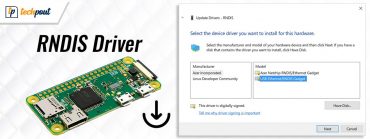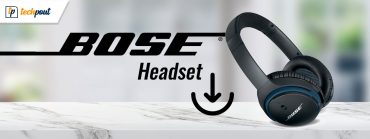What Are WHQL Drivers: Complete Information

WHQL-certified and drivers without WHQL certification are confusing. Hence, you can read this article to understand them in detail.
Drivers, i.e., software that helps hardware components communicate with your computer system, are essential for the device to function correctly. However, an incompatible driver can do more damage than good. So, how to find out if the driver is compatible or complies with your operating system? The answer is simple. You can check whether or not the driver is a WHQL driver to judge its compatibility.
WHQL, or Windows Hardware Quality Labs, is a Microsoft testing service for drivers and hardware to check their adherence to Windows operating systems. Formerly known as Microsoft Compatibility Labs (MCL), this facility is also called Windows Quality Online Services or Winqual.
In this article, we are going to elaborate on this hardware and driver testing service and what difference WHQL-certified drivers make. Let us begin by understanding WHQL in a bit more detail.
What Is WHQL
In simple terms, WHQL is a lab that offers a variety of test suites for software and hardware to prove to you and Microsoft that the driver or hardware component is stable and will work perfectly on Windows devices. After clearing the WHQL tests, the manufacturers can use “WHQL Certified”, “Certified for Windows”, “Windows (your OS version) compatible, or other similar terms to indicate their product/driver satisfies Microsoft standards. You can check the Windows Hardware Compatibility List to find products with WHQL certification.
Now that you are familiar with WHQL certification, let us provide you with an understanding of WHQL drivers.
What Is WHQL Driver
When a driver is labeled as a certified or signed driver, it indicates the driver has cleared the WHQL tests and is stable and ready to be used on a specific Windows operating system.
The signed drivers boast an encrypted digital signature attached to the complete installation file set (including INF files, driver executables, README, etc.) The signing of drivers generates a catalog file which is a crucial part of the installation of the driver and helps the operating system in the driver recognition.
Does that mean you cannot install drivers without WHQL certification? You can certainly install non-certified drivers. However, doing that may have a few disadvantages. We will go deeper into them after a while. First, let us shed some light on what these uncertified drivers are.
What Is a Non-WHQL Driver
A non-WHQL or regular driver is a driver that may not have undergone the WHQL certification process and may not have been tested for being compatible with the Windows operating system. These drivers come from numerous sources, such as third-party websites or the hardware manufacturer, i.e., attest-signed drivers.
An attest-signed driver does not have a WHQL certification. The manufacturer has performed rudimentary testing on the driver to make Windows trust them. However, Microsoft gives no assurance of the compatibility, functionality, and reliability of these drivers.
This brings us to the question, what difference does it make if or not the driver you install is a WHQL driver? Let us answer this question in the following section.
Also know: How to Find a Driver’s Version Number in Windows
WHQL Driver Vs Non-WHQL Driver
Whether a driver is WHQL certified or not impacts several factors. Let us look at some critical ones one after another.
Stability
Since WHQL drivers have undergone rigorous Microsoft tests, they are less likely to conflict with other software or hardware components and cause system crashes. Whereas, the non-certified drivers may be unstable, leading to various performance issues.
Security
Thorough WHQL testing ensures the driver is free from malware or vulnerabilities. However, since non-certified drivers have not undergone such tests or may not have cleared them, nothing can be said about how secure these drivers are. Moreover, third-party websites are often a source of these uncertified drivers, leading to an increased risk of malware and other security loopholes.
Compatibility
There are reduced chances of compatibility issues with WHQL drivers since they are already tested to be compatible with the Windows system. However, the same cannot be said for the non-certified drivers.
So, now you know why we always recommend downloading and installing WHQL-certified driver updates. Since many third-party sources claim drivers to be WHQL drivers even when they are not, it is crucial to download and install drivers through reliable applications, such as Win Riser.
Summing Up
This article explained in detail WHQL drivers, drivers with no WHQL certification, and how these drivers differ from each other. We hope you no longer have any confusion. However, you can shoot us a comment if any doubts persist. We will be happy to resolve all your concerns.


